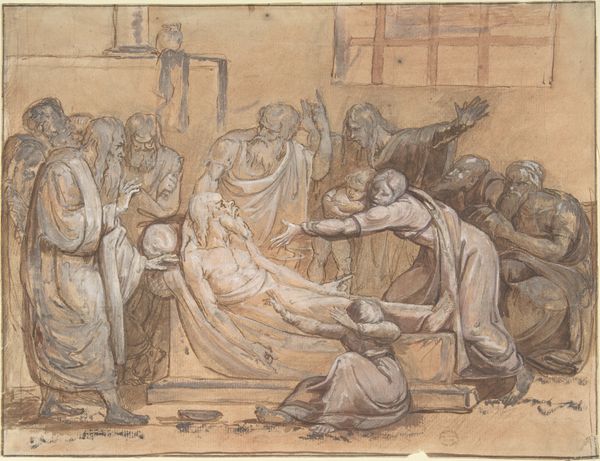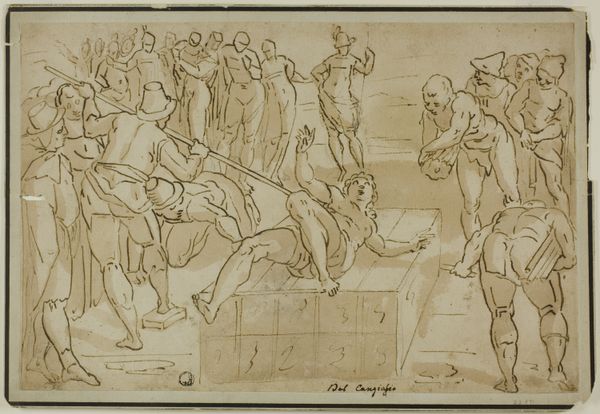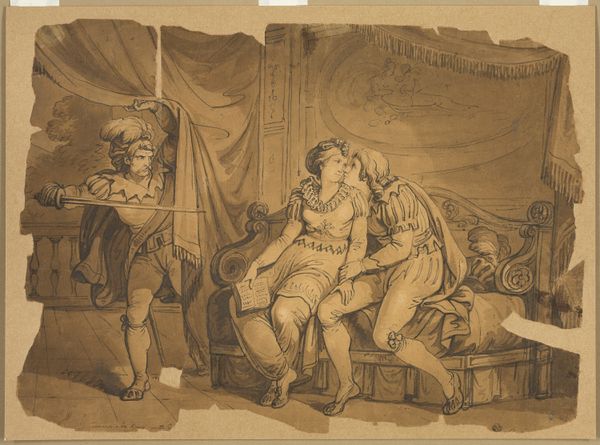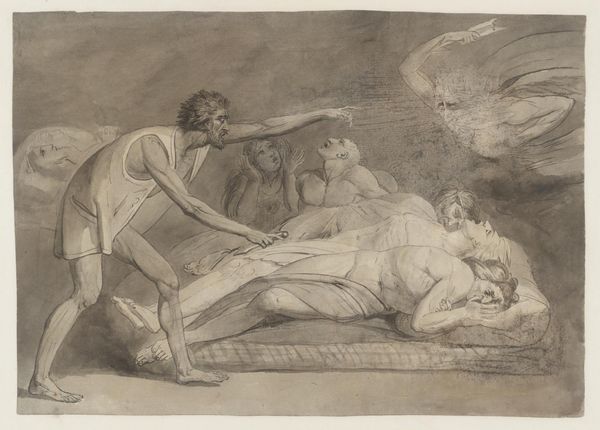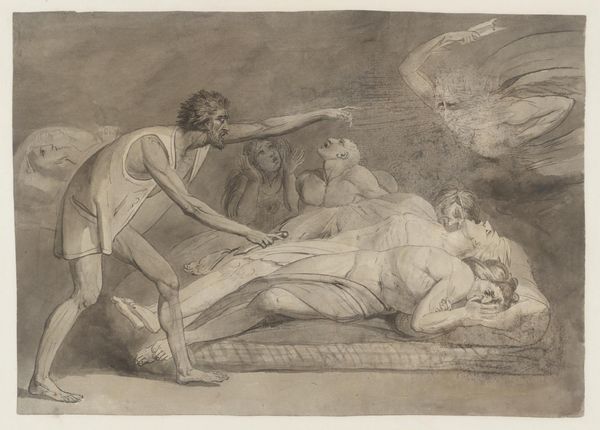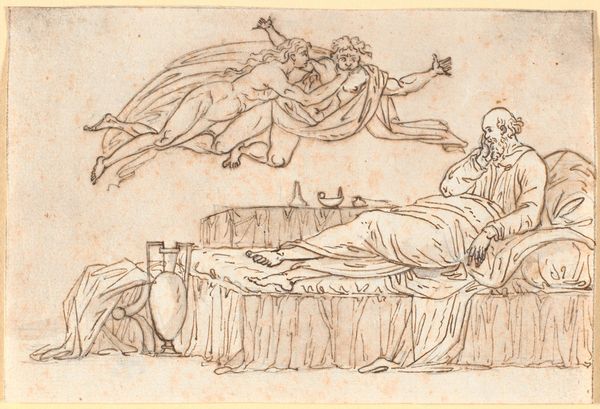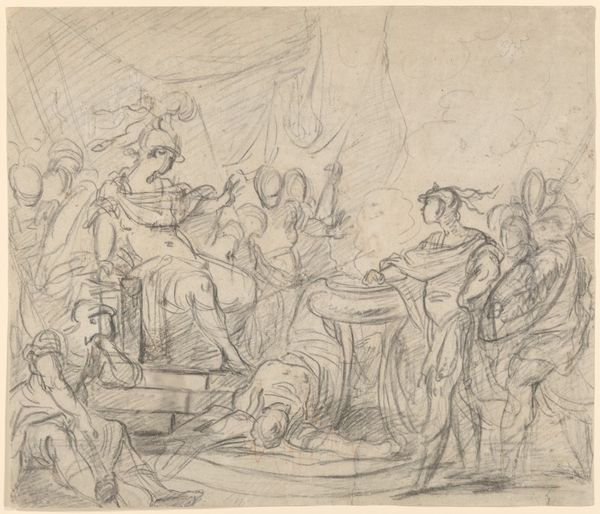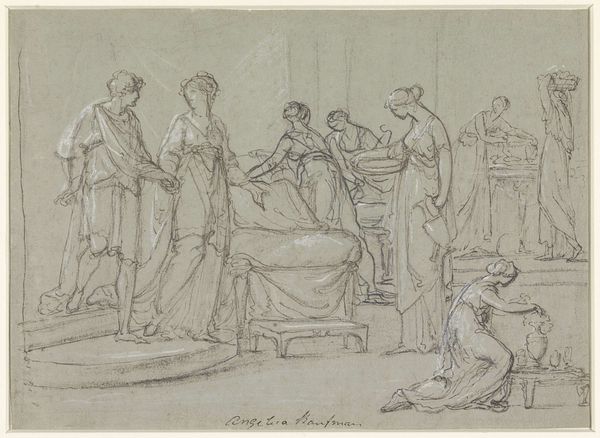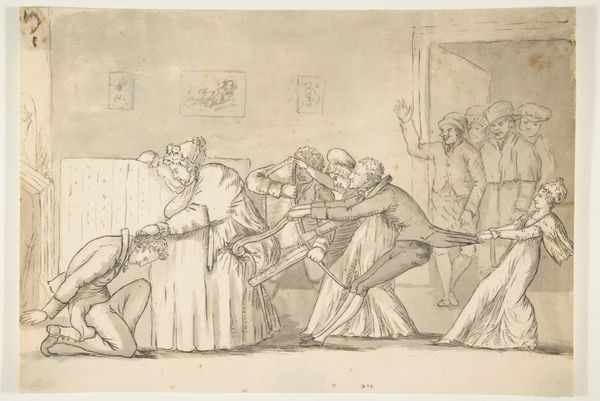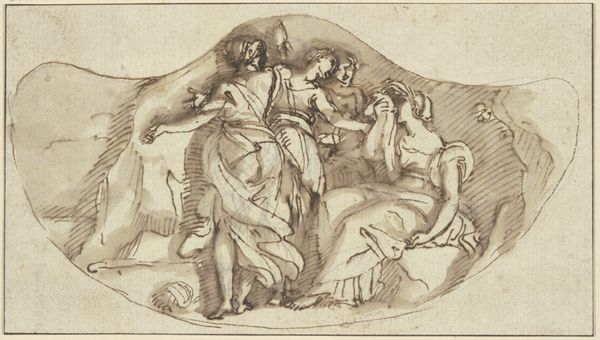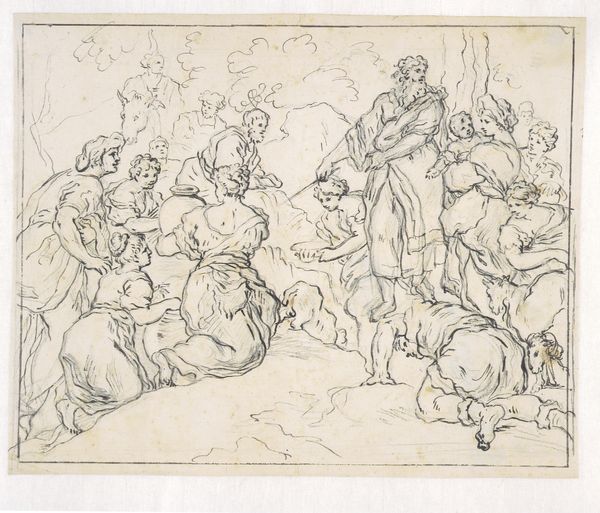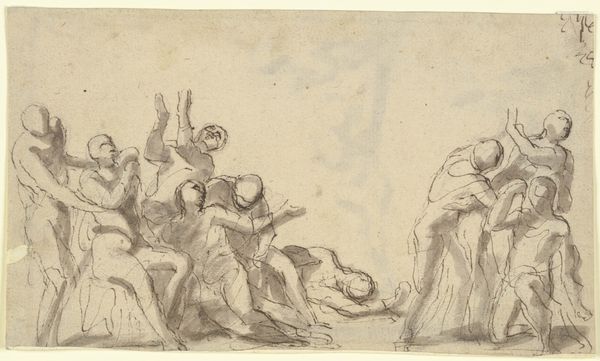
drawing, paper, graphite
#
drawing
#
neoclacissism
#
16_19th-century
#
landscape
#
figuration
#
paper
#
graphite
#
history-painting
Copyright: Public Domain
Editor: Here we have "Der neue Pausias und sein Blumenmädchen," or "The New Pausias and his Flower Girl," a graphite drawing on paper by Bernhard Neher the Younger. The composition feels very classical, almost like a frieze. What strikes me most is how… staged it appears. Like a tableau vivant. What do you make of this scene? Curator: The staged quality you notice is crucial. Neoclassical art, like this, often aimed to evoke a sense of historical reconstruction and moral instruction. This drawing refers to Pausias, an ancient Greek painter, famous for his flower garlands. Notice the emphasis on idealized forms, recalling ancient Greek sculpture. But what symbols do you observe, specifically those that tell us something about artistic creation itself? Editor: I see the woman placing a garland on the reclining man’s head... Is he meant to be Pausias? Is that supposed to be symbolic of artistic recognition or something? And the other figures, are they muses, or patrons maybe? Curator: Precisely! The garland symbolizes artistic honor, alluding to Pausias's mastery of floral painting. The surrounding figures might represent patrons, or perhaps allegorical figures associated with artistic inspiration. Look closer, though, at *how* they're arranged and the way the scene unfolds across the picture plane. Neher consciously uses imagery of antiquity, tapping into cultural memory, to elevate the status of the artist. Do you see how art history becomes a kind of legitimizing force? Editor: I hadn't considered it that way. So, by drawing on these classical themes, Neher is trying to connect himself, or his subject, to this established lineage of great artists? It is a lot more self-aware than I initially thought. Curator: Exactly! It reveals the lasting power of symbols and the artist's conscious placement within that continuum. Hopefully you'll remember this in other drawings you will look at in the future. Editor: Absolutely. Thanks, this was very helpful!
Comments
No comments
Be the first to comment and join the conversation on the ultimate creative platform.
